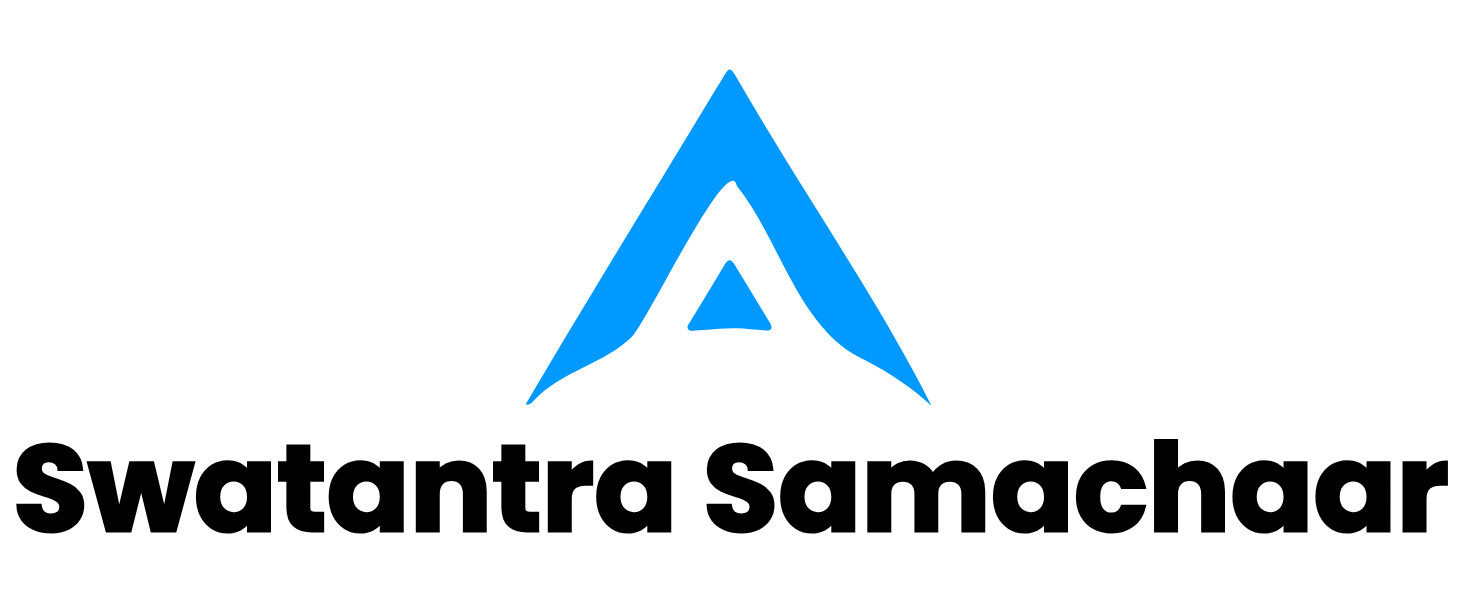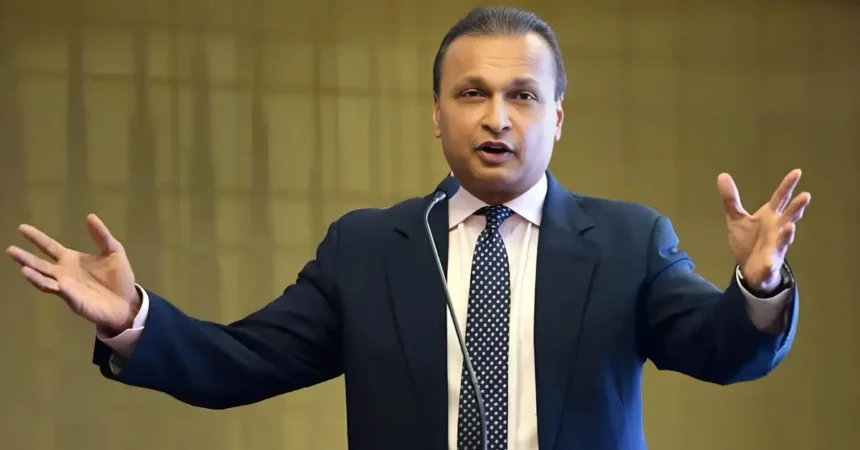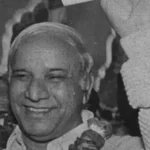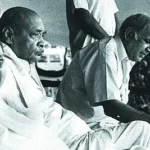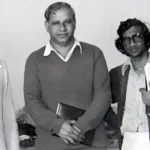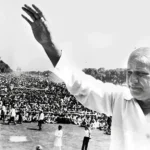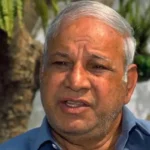The name Anil Ambani evokes a complex tapestry of extraordinary success, devastating failure, and relentless determination. Once standing as the sixth richest person globally with a staggering $42 billion fortune, this Indian business magnate has experienced one of the most dramatic financial reversals in corporate history. From commanding a telecommunications empire that connected millions across India to declaring bankruptcy before a UK court, Ambani’s journey represents both the heights of entrepreneurial achievement and the depths of business catastrophe. Today, as enforcement agencies investigate alleged financial irregularities worth 17,000 crore, his story continues to unfold with all the drama of a Bollywood thriller.
- Early Life and Family Foundation
- Personal Details Summary
- Educational Journey and Academic Excellence
- Education Details Summary
- Marriage and Family Life
- Professional Career and Business Empire Building
- Career Timeline Summary
- Political Career and Public Service
- Entertainment Industry Ventures and Global Partnerships
- Major Business Ventures Summary
- The Peak Years: Rise to Global Prominence
- Net Worth Evolution Summary
- The Great Decline: From Billions to Bankruptcy
- Legal Challenges and Regulatory Troubles
- Current Business Status and Recovery Attempts
- Awards and Recognition Throughout Career
- Awards and Recognition Summary
- Current Net Worth and Financial Standing
- Influence and Legacy in Indian Business
- Frequently Asked Questions
- Conclusion: A Tale of Resilience and Redemption
- FAQ’s
Early Life and Family Foundation
Born on June 4, 1959, in Mumbai, Anil Dhirubhai Ambani entered the world as the younger son of one of India’s most visionary entrepreneurs. His father, Dhirubhai Ambani, had already begun laying the foundation of what would become the Reliance empire, while his mother, Kokilaben Ambani, provided the nurturing stability that would shape his character. Growing up in a Gujarati family with deep entrepreneurial roots, Anil was exposed to business discussions and strategic thinking from an early age.
The Ambani household was far from typical. Dhirubhai instilled a unique blend of discipline and ambition in his children through what he called “incentive-oriented outings”. These weren’t ordinary family trips but carefully designed character-building exercises where young Anil and his elder brother Mukesh would be rewarded with boxes of mangoes for completing 10-kilometer hikes, teaching them that rewards came only through effort and perseverance. However, the legendary patriarch was equally strict about maintaining decorum, particularly in front of guests, where any misbehavior met swift consequences.
This upbringing in Mumbai’s bustling commercial environment, combined with regular exposure to his father’s textile business discussions, shaped Anil’s understanding of commerce, negotiation, and the importance of building relationships. Unlike many business heirs who grew up in insulated luxury, the Ambani children witnessed their father’s daily struggles to build his empire from modest beginnings, instilling in them both appreciation for hard work and an unshakeable belief in the power of dreams backed by determination.
Personal Details Summary
| Aspect | Details |
|---|---|
| Full Name | Anil Dhirubhai Ambani |
| Date of Birth | June 4, 1959 |
| Age (as of 2025) | 66 years |
| Birthplace | Mumbai, Maharashtra, India |
| Nationality | Indian |
| Father | Dhirubhai Ambani |
| Mother | Kokilaben Ambani |
| Spouse | Tina Ambani (née Munim) |
| Children | Jai Anmol Ambani, Jai Anshul Ambani |
| Brother | Mukesh Ambani |
| Sisters | Nina Kothari, Deepti Salgaocar |
Educational Journey and Academic Excellence
Anil Ambani’s educational trajectory reflected his family’s commitment to excellence and global perspective. He began his academic journey at Kishinchand Chellaram College in Mumbai, where he pursued his Bachelor of Science degree. Even during his undergraduate years, his professors noted his analytical mind and natural leadership qualities, traits that would later define his business approach.
The pivotal moment in his educational journey came when he secured admission to the prestigious Wharton School at the University of Pennsylvania, one of the world’s most respected business institutions. Graduating with an MBA in 1983, Ambani joined the ranks of global business leaders who had walked those hallowed halls. The Wharton experience exposed him to cutting-edge financial theories, international business practices, and a network of future global executives.
At Wharton, Ambani distinguished himself not just academically but also through his understanding of emerging market dynamics. His professors recalled his insightful questions about developing economies and his thesis work on capital market innovations in developing nations. This academic foundation would prove invaluable when he later pioneered India’s entry into international capital markets, bringing sophisticated financial instruments to Indian shores for the first time.
The international exposure at Wharton also broadened his perspective beyond the Indian market, preparing him for the global business stage where he would later negotiate billion-dollar deals with Hollywood studios and international investors. His time in Philadelphia also cultivated his appreciation for Western business culture while maintaining his deep connection to Indian values and traditions.
Education Details Summary
| Level | Institution & Details |
|---|---|
| Early Education | Kishinchand Chellaram College, Mumbai |
| Bachelor’s Degree | Bachelor of Science (B.Sc.) – University of Mumbai (1981) |
| Master’s Degree | MBA from Wharton School, University of Pennsylvania (1983) |
Marriage and Family Life
The love story between Anil Ambani and Tina Munim reads like a Bollywood script, complete with initial rejection, family opposition, and ultimate triumph. Their first encounter occurred at a wedding function where Tina, then a popular Bollywood actress, wore a distinctive black saree that made her stand out among the traditionally dressed guests. While it wasn’t love at first sight for Anil, that black saree remained etched in his memory for years to come.
Fate brought them together again in Philadelphia, where mutual friends arranged their introduction. This time, Anil was immediately smitten and asked Tina out, but the accomplished actress, accustomed to unwanted advances from admirers, politely declined. Their third meeting, arranged by Tina’s nephew who insisted she meet his Gujarati friend, finally sparked the romance that would define both their lives.
However, their path to marriage was far from smooth. The Ambani family, despite their progressive business outlook, initially harbored reservations about their son marrying a film actress. This opposition led to a painful four-year separation where both Anil and Tina struggled with their feelings while respecting family wishes. During this period, Tina channeled her emotional turmoil into her work, completing her pending film commitments before flying to the United States to pursue interior design studies.
The eventual resolution came through persistence and changing family dynamics. When the Ambani family finally accepted their relationship, Anil wasted no time in reconnecting with Tina. Their February 2, 1991, wedding was a grand Gujarati celebration that marked not just the union of two individuals but the merger of Bollywood glamour with business dynasty prestige.
Their marriage produced two sons: Jai Anmol Ambani (born December 1991) and Jai Anshul Ambani (born September 1995). Both sons received world-class education, with Jai Anmol studying at Warwick Business School and later joining the family business to help revive the empire during its darkest days. Jai Anmol married Khrisha Shah in February 2022, continuing the family tradition of combining business acumen with social responsibility.
Professional Career and Business Empire Building
Anil Ambani officially entered the Reliance Industries fold in 1983 as Co-Chief Executive Officer, immediately after completing his Wharton MBA. His timing proved fortuitous, as his father Dhirubhai suffered a stroke in 1986, necessitating Anil’s rapid ascension to day-to-day management of the company’s financial operations. This early responsibility thrust him into complex negotiations and strategic decisions that would shape his business philosophy.
His most significant early contribution came through pioneering India’s entry into international capital markets. While Indian companies had traditionally relied on domestic funding sources, Anil recognized the potential of global financial markets. He spearheaded Reliance’s first international public offerings of global depositary receipts, convertibles, and bonds, raising approximately $2 billion from overseas financial markets starting in 1991. The landmark 100-year Yankee bond issue launched in January 1997 under his stewardship demonstrated his innovative approach to corporate financing.
Following Dhirubhai’s death in 2002, Anil initially worked alongside his brother Mukesh in joint leadership of the Reliance conglomerate. However, philosophical differences and strategic disagreements led to increasing tensions between the brothers. The absence of a clear succession plan from their father created a power vacuum that ultimately required their mother Kokilaben’s intervention to resolve.
The historic family split in 2005 marked the beginning of Anil Ambani’s independent business journey. While Mukesh retained the traditional oil refining and petrochemicals businesses, Anil received what many considered the more dynamic growth sectors: telecommunications, power generation, financial services, and entertainment. This division created the Anil Dhirubhai Ambani Group (ADAG), encompassing companies like Reliance Communications, Reliance Power, Reliance Infrastructure, and Reliance Capital.
Under his leadership, these companies initially flourished. Reliance Communications became India’s second-largest telecom operator, Reliance Power achieved the fastest IPO subscription in Indian market history, and his entertainment ventures reached global prominence through partnerships with Hollywood studios. His business philosophy emphasized aggressive expansion, leveraging debt for growth, and maintaining customer-centric operations across all sectors.
Career Timeline Summary
| Year | Milestone |
|---|---|
| 1983 | Joined Reliance Industries as Co-CEO after MBA |
| 1986 | Took day-to-day management after father’s stroke |
| 1991 | Led Reliance’s overseas capital market initiatives |
| 2002 | Joint leadership with Mukesh after father’s death |
| 2004-2006 | Independent Member of Rajya Sabha |
| 2005 | Acquired Adlabs Films (later Reliance MediaWorks) |
| 2006 | Formation of Reliance ADA Group after split |
| 2008 | Peak net worth of $42 billion – 6th richest globally |
| 2019-2020 | Declared bankruptcy in UK court |
| 2024 | SEBI imposed 5-year securities market ban |
| 2025 | ED investigation for 17,000 crore loan fraud |
Political Career and Public Service
Anil Ambani ventured into public service when he was elected as an Independent Member of the Rajya Sabha in June 2004, representing Uttar Pradesh with support from the Samajwadi Party. His entry into politics wasn’t merely ceremonial but reflected his genuine interest in contributing to national policy, particularly in areas related to economic development and infrastructure.
His political association with Samajwadi Party leader Amar Singh proved instrumental in this appointment. The relationship went beyond political convenience, as Singh had been trying to attract prominent business figures to the political arena. Their friendship was well-documented, with reports of their families vacationing together along with other prominent figures like Amitabh Bachchan.
During his parliamentary tenure, Anil Ambani focused primarily on economic policy and infrastructure development issues. His business background provided valuable insights during discussions on industrial policy, foreign investment regulations, and telecommunications reforms. However, his political career was relatively brief, as he voluntarily resigned from the Rajya Sabha on March 25, 2006. This resignation came amid growing demands from his expanding business empire and potential conflicts of interest as his companies increasingly engaged with government policies and contracts.
The timing of his resignation coincided with the formation of the Reliance ADA Group and his focus on building independent business operations. His brief political stint, while not extensively documented in terms of specific legislative contributions, demonstrated his commitment to public service and understanding of policy implications for Indian business development.
Entertainment Industry Ventures and Global Partnerships
Anil Ambani’s foray into the entertainment industry marked one of his most visionary business moves, transforming him from an industrial magnate into a global media player. His entertainment journey began in 2005 with the acquisition of a majority stake in Adlabs Films, a company initially focused on film processing but possessing immense growth potential. Recognizing the sector’s potential for both domestic and international expansion, he rebranded the company as Reliance MediaWorks in 2009, reflecting its evolution into a diversified film and media services enterprise.
The crown jewel of his entertainment ventures came through his partnership with legendary Hollywood director Steven Spielberg. In 2008, Anil Ambani announced a groundbreaking $1.2 billion joint venture with Spielberg’s DreamWorks Studios, creating one of the most significant India-Hollywood collaborations in cinema history. This partnership wasn’t merely financial but represented a cultural bridge between two of the world’s largest film industries.
The DreamWorks deal structured financing of $825 million, with Ambani personally investing $325 million as equity, Disney contributing $150 million as a distribution advance, and JPMorgan arranging the remaining debt financing. This partnership produced several acclaimed films, including the Academy Award-winning “Lincoln” in 2012, demonstrating the creative success of the collaboration beyond mere financial returns.
Building on this success, Ambani later co-founded Amblin Partners in 2015, joining forces with Spielberg and Participant Media’s Jeff Skoll. This venture produced notable films including “The BFG,” “The Girl on the Train,” and “Ready Player One,” establishing Reliance Entertainment as a significant force in global entertainment production.
His entertainment empire extended beyond film production to include BIG Cinemas, operating 468 screens across India, the United States, Malaysia, and the Netherlands. The multiplex chain represented one of India’s largest cinema exhibition networks, providing integrated entertainment experiences from content creation to audience delivery. However, financial pressures eventually forced the sale of BIG Cinemas to Carnival Cinemas for 710 crore in 2014.
Major Business Ventures Summary
| Company | Sector | Current Status |
|---|---|---|
| Reliance Communications | Telecommunications | Bankrupt (2019) |
| Reliance Power | Power Generation | Debt-free (2025) |
| Reliance Infrastructure | Infrastructure | Operational with challenges |
| Reliance Capital | Financial Services | Sold to Hinduja Group |
| Reliance MediaWorks | Entertainment | Sold to Carnival Cinemas |
| Reliance Home Finance | Housing Finance | Under insolvency |
| DreamWorks Partnership | Hollywood Entertainment | Dissolved |
The Peak Years: Rise to Global Prominence
The period between 2005 and 2008 represented the absolute zenith of Anil Ambani’s career, transforming him from a successful Indian businessman into a globally recognized billionaire. Following the family business split, his companies experienced unprecedented growth that captured international attention and established him among the world’s financial elite.
His telecommunications venture, Reliance Communications, emerged as India’s second-largest mobile operator, revolutionizing connectivity across the subcontinent with innovative pricing strategies and extensive network coverage. The company’s success stemmed from Ambani’s vision of democratizing mobile communication, making it accessible to India’s burgeoning middle class through affordable tariff plans and widespread infrastructure development.
The pinnacle of his business achievements came with Reliance Power’s Initial Public Offering in 2008, which created Indian stock market history. The IPO generated demand for 10.6 times the available shares, with the entire offering being subscribed within just 60 seconds – the fastest subscription in Indian capital market history. This remarkable response raised $3 billion and demonstrated unprecedented investor confidence in both Ambani’s leadership and India’s power sector potential.
During this golden period, Anil Ambani’s net worth soared from approximately $7 billion in 2005 to a peak of $42 billion in 2008. This astronomical growth placed him as the sixth richest person globally according to Forbes, surpassing even his elder brother Mukesh in personal wealth. His rapid wealth accumulation made him a symbol of India’s economic emergence on the global stage and earned him recognition as a youth icon and visionary business leader.
His influence extended beyond mere financial metrics. He became a sought-after speaker at international business forums, a respected voice in policy discussions, and a symbol of India’s entrepreneurial potential. Media outlets worldwide featured his business strategies, lifestyle, and vision for India’s economic future, making him one of the most recognizable Indian business figures internationally.
Net Worth Evolution Summary
| Year | Net Worth | Status |
|---|---|---|
| 2002 | $2.8 billion (combined with Mukesh) | Combined family wealth |
| 2004 | $6 billion (combined with Mukesh) | Growing business empire |
| 2005 | $7 billion (combined with Mukesh) | Pre-split peak |
| 2008 (Peak) | $42 billion (Individual peak) | Global 6th richest person |
| 2011 | $8.8 billion | Declining fortunes |
| 2018 | $2.7 billion | Further decline |
| 2020 | Zero (bankruptcy declaration) | Bankruptcy in UK court |
| 2025 | ≈$530 million | Partial recovery |
The Great Decline: From Billions to Bankruptcy
The same period that witnessed Anil Ambani’s meteoric rise also marked the beginning of his spectacular downfall, demonstrating how quickly fortunes can reverse in the volatile world of global business. The first warning signs appeared in 2008 when his planned merger between Reliance Communications and South Africa’s MTN collapsed due to his brother Mukesh’s legal intervention, claiming right of first refusal. This failed deal cost Ambani approximately $30 billion in net worth as RCom’s stock plummeted 48% between July and November 2008.
The global financial crisis of 2008-2009 further accelerated his wealth erosion, but the fundamental problems ran deeper than market turbulence. Anil Ambani had leveraged his companies heavily to fund aggressive expansion plans, particularly in telecommunications where he invested around $2 billion in Reliance Communications infrastructure. However, the company struggled to transition to 4G technology while competitors like Airtel and Vodafone gained market share with superior network capabilities.
The situation deteriorated dramatically with the 2016 entry of Reliance Jio, ironically launched by his brother Mukesh. Jio’s disruptive pricing strategy and superior 4G network decimated the traditional telecom market, reducing RCom’s market share to just 2%. Unable to compete effectively, Reliance Communications accumulated mounting debts that eventually exceeded 45,000 crore, making it unsustainable to continue operations.
By 2019, the inevitable occurred: Reliance Communications filed for voluntary bankruptcy under the Insolvency and Bankruptcy Code. The company’s secured debt was estimated at around 33,000 crore, while lenders submitted claims exceeding this amount. The bankruptcy proceedings highlighted how Anil Ambani had provided personal guarantees for corporate loans, making him personally liable for company debts.
The most dramatic moment came in February 2020 when Ambani declared bankruptcy before a UK court, claiming his net worth had fallen to zero after accounting for liabilities. This declaration came during legal proceedings initiated by three Chinese banks seeking to recover over $680 million they had lent to RCom in 2012 under Ambani’s personal guarantee. His statement to the court that he held no “meaningful assets which can be liquidated” marked the nadir of his once-glorious career.
Legal Challenges and Regulatory Troubles
Anil Ambani’s business troubles extended far beyond market failures into serious legal and regulatory challenges that have dominated his recent years. In August 2024, the Securities and Exchange Board of India (SEBI) imposed a five-year ban on him from the securities market, along with a 25 crore penalty for orchestrating a fraudulent scheme through Reliance Home Finance Limited (RHFL).
The SEBI investigation revealed that Anil Ambani, working with key executives, had systematically diverted funds from RHFL by disguising them as loans to entities connected to him. The regulator found that despite the RHFL Board of Directors issuing firm directives to halt such lending practices, management deliberately ignored these instructions. The fraudulent scheme involved extending loans to credit-unworthy borrowers who were ultimately linked to Ambani, with these loans eventually becoming non-performing assets.
More significantly, the Enforcement Directorate launched a comprehensive investigation in 2025 into alleged money laundering activities involving 17,000 crore in bank loans. The probe, conducted under the Prevention of Money Laundering Act (PMLA), examined loans taken by various Reliance ADA Group entities from nearly 20 banks, including Yes Bank, State Bank of India, Axis Bank, ICICI Bank, and HDFC Bank.
The ED investigation uncovered what officials described as a “well-planned and thought-after conspiracy” to siphon off public money through a network of shell companies, backdated approvals, fake bank guarantees, and offshore assets. A key allegation involves the diversion of approximately 3,000 crore in loans granted by Yes Bank between 2017 and 2019, with investigators suspecting quid pro quo arrangements where Yes Bank promoters allegedly received money shortly before loans were sanctioned.
In August 2025, Anil Ambani appeared before ED officials for over nine hours of questioning, during which he reportedly denied involvement in the alleged irregularities. He claimed that financial decisions were made by internal company boards and that he merely signed approvals in his capacity as chairman. However, investigators believe documentary evidence suggests deeper involvement in the systematic diversion of funds.
The legal troubles intensified with the arrest of Partha Sarathi Biswal, managing director of Biswal Tradelink Pvt Ltd, for allegedly arranging fake bank guarantees worth 68.2 crore on behalf of Reliance Power. This case highlighted the use of forged documents and fraudulent guarantees to secure contracts and loans, adding another layer to the complex web of alleged financial irregularities.
Current Business Status and Recovery Attempts
Despite the overwhelming challenges, Anil Ambani and his sons have been working systematically to revive the family business empire. The most significant positive development has been Reliance Power’s transformation from a debt-laden entity to a completely debt-free company by 2025. This remarkable turnaround involved strategic asset sales, operational efficiency improvements, and securing new renewable energy projects.
Reliance Power recently partnered with Bhutan’s Druk Holding and Investments to develop renewable energy projects, including a 500 MW solar power plant and the Chamkharchhu-1 hydro project. Additionally, through its subsidiary Reliance NU Suntech, the company secured a 930 MW solar energy contract from the Solar Energy Corporation of India (SECI), representing India’s largest solar and battery storage project at the time of award.
Reliance Infrastructure has also shown signs of recovery, though it continues facing challenges. The company has pivoted toward defense manufacturing, with plans to generate 3,000 crore from ammunition and aggregate exports by FY27. Current projections indicate the company could export 1,500 crore worth of large-caliber ammunition in the current financial year, representing a significant diversification from traditional infrastructure projects.
The defense sector initiatives build on earlier investments, including the joint venture with France’s Dassault Aviation established in 2017 at Mihan-SEZ in Nagpur. This facility initially focused on producing components for Rafale warplanes and Falcon business jets, with plans to eventually assemble complete aircraft. Recent developments include a 600 crore export order secured from German defense giant Rheinmetall and partnerships with US-based Coastal Mechanics for aircraft and helicopter upgrades.
However, recovery efforts have been complicated by ongoing investigations and regulatory restrictions. The National Company Law Appellate Tribunal (NCLAT) recently suspended insolvency proceedings against Reliance Infrastructure after the company paid outstanding interest dues of 92 crore, providing temporary relief from creditor pressures.
Awards and Recognition Throughout Career
Throughout his career, Anil Ambani received numerous prestigious awards and recognitions that acknowledged his contributions to Indian business and economic development. In 1997, Business India magazine honored him with their “Businessman of the Year” award, recognizing his innovative approaches to corporate financing and international market expansion.
The Bombay Management Association presented him with the “Entrepreneur of the Decade Award” in 2002, acknowledging his role in transforming Reliance from a domestic textile company into a global conglomerate. This recognition came at the height of his success in pioneering India’s entry into international capital markets and establishing new paradigms for Indian corporate financing.
His youth appeal and modern business approach earned him the “MTV Youth Icon of the Year” award in 2003, making him one of the few business leaders to receive recognition from India’s youth-oriented media. This award reflected his ability to connect with younger generations and represent a new face of Indian entrepreneurship on the global stage.
The prestigious Platts Global Energy Awards recognized him as “CEO of the Year” in 2004, acknowledging his leadership in India’s energy sector and his vision for power sector development. This international recognition validated his strategic approach to energy infrastructure development and his role in addressing India’s growing power needs.
The Times of India honored him as “Businessman of the Year” in 2006 through their TNS poll, while India Today magazine named him the “Best Role Model” among business leaders the same year. These recognitions came during his peak years when his companies were experiencing unprecedented growth and his personal net worth was approaching its historical maximum.
His influence extended beyond business recognition to broader societal impact, with India Today including him as the 3rd most powerful person in India in their 2009 Power List. This ranking acknowledged not just his business success but his influence on policy discussions, economic development, and his role as a symbol of India’s entrepreneurial potential.
Awards and Recognition Summary
| Year | Award/Recognition |
|---|---|
| 1997 | Businessman of the Year – Business India |
| 2002 | Entrepreneur of the Decade – Bombay Management Association |
| 2003 | MTV Youth Icon of the Year |
| 2004 | CEO of the Year – Platts Global Energy Awards |
| 2006 | Businessman of the Year – The Times of India |
| 2006 | Best Role Model – India Today magazine |
| 2009 | 3rd Most Powerful Person in India – India Today Power List |
Current Net Worth and Financial Standing
As of 2025, Anil Ambani’s financial recovery remains partial and tentative, with his estimated net worth standing at approximately $530 million (4,500 crore). This represents a dramatic contrast from his 2008 peak of $42 billion but signifies considerable improvement from his 2020 bankruptcy declaration when he claimed zero net worth after accounting for liabilities.
The recovery has been driven primarily by strategic debt reduction across his remaining companies and successful asset monetization. Between 2019 and 2025, the Reliance Group sold assets worth approximately 73,250 crore to repay bank debts, including cement operations (8,000 crore), power distribution assets (18,000 crore), prime Mumbai real estate (10,000 crore), Reliance Capital (24,000 crore), insurance and mutual fund businesses (21,000 crore), and road infrastructure projects (9,000 crore).
However, significant challenges persist in accurately assessing his current financial position due to ongoing legal proceedings and regulatory investigations. The 17,000 crore loan fraud investigation by the Enforcement Directorate could potentially result in asset attachment under the Prevention of Money Laundering Act, depending on the investigation’s outcomes.
His sons, particularly Jai Anmol Ambani, have played crucial roles in the family’s financial recovery efforts. Jai Anmol, with an estimated net worth of $3.3 billion (over 20,000 crore), has been instrumental in negotiating debt settlements and securing new business opportunities. His success in persuading Nippon to invest in Reliance Capital resulted in a 40% increase in the company’s stock prices, demonstrating the next generation’s business acumen.
The family continues to reside in their luxurious 17-story Mumbai residence “Abode,” valued at approximately 5,000 crore. This property, featuring a helipad, swimming pool, gym, and panoramic Mumbai skyline views, represents one of their most significant remaining assets and symbolizes their determination to maintain their lifestyle despite financial setbacks.
Influence and Legacy in Indian Business
Anil Ambani’s influence on Indian business extends far beyond his personal financial journey, representing both the possibilities and perils of modern Indian entrepreneurship. His pioneering role in bringing international capital market innovations to India fundamentally changed how Indian companies approach global financing, with many contemporary business leaders adopting strategies he first introduced in the 1990s.
His telecommunications ventures, particularly Reliance Communications, played a crucial role in democratizing mobile connectivity across India. During its peak years, RCom connected millions of Indians to mobile networks for the first time, contributing significantly to the country’s digital transformation. The company’s innovative pricing strategies and infrastructure investments helped establish the foundation for India’s current position as one of the world’s largest telecommunications markets.
The entertainment industry partnerships, especially the collaboration with Steven Spielberg’s DreamWorks, elevated India’s profile in global entertainment production. This relationship demonstrated Indian capital’s ability to participate as an equal partner in Hollywood productions, paving the way for subsequent Indian investments in international entertainment ventures.
However, his legacy also serves as a cautionary tale about the risks of excessive leverage and the importance of corporate governance. Business schools across India now study his rise and fall as case studies in both entrepreneurial success and risk management failures. His experience highlights the critical importance of maintaining debt discipline, adapting to technological disruption, and ensuring transparent financial practices.
His sons’ current efforts to revive the family business empire under significantly more conservative financial strategies may ultimately define how history remembers the Ambani name. Their focus on debt-free operations, renewable energy, and defense manufacturing suggests lessons learned from their father’s experiences and adaptation to contemporary business realities.
Frequently Asked Questions
| Question | Answer |
|---|---|
| What is Anil Ambani’s current net worth in 2025? | Approximately $530 million (4,500 crore), significantly recovered from his 2020 bankruptcy declaration but far below his 2008 peak of $42 billion. |
| Why did Anil Ambani declare bankruptcy? | He faced mounting debts from failed business ventures, particularly Reliance Communications, and was unable to repay loans totaling over 45,000 crore to various banks. |
| What businesses does Anil Ambani currently own? | His main operational companies include Reliance Power (now debt-free), Reliance Infrastructure (focusing on defense), with most other ventures either sold or under insolvency proceedings. |
| What is the current ED investigation against Anil Ambani about? | The Enforcement Directorate is investigating alleged money laundering involving 17,000 crore in bank loans through suspected fund diversions and fraudulent schemes. |
| How did Anil Ambani lose his fortune? | A combination of excessive debt leverage, failed business strategies, technological disruption in telecommunications, and the 2008 global financial crisis led to his downfall. |
| What role did his sons play in business recovery? | Jai Anmol and Jai Anshul Ambani have been instrumental in debt reduction, securing new projects, and implementing more conservative financial strategies to revive the family business. |
| What awards has Anil Ambani received? | Major recognitions include CEO of the Year (2004), MTV Youth Icon (2003), Businessman of the Year multiple times, and ranking as 3rd most powerful person in India (2009). |
| What is Anil Ambani’s educational background? | He holds a Bachelor of Science from Mumbai University and an MBA from the prestigious Wharton School, University of Pennsylvania (1983). |
| Who is Anil Ambani married to? | He married former Bollywood actress Tina Munim in 1991, and they have two sons: Jai Anmol and Jai Anshul Ambani. |
| What was Anil Ambani’s peak net worth? | His highest net worth was $42 billion in 2008, making him the 6th richest person globally and briefly wealthier than his brother Mukesh Ambani. |
Conclusion: A Tale of Resilience and Redemption
The story of Anil Ambani stands as one of the most compelling narratives in contemporary Indian business history, embodying the dramatic possibilities of entrepreneurial ambition while illustrating the sobering realities of financial overextension and market disruption. From his early days as a Wharton-educated visionary who pioneered India’s entry into global capital markets to his current status as a businessman fighting to rebuild his legacy, his journey reflects both the opportunities and challenges of modern Indian capitalism.
His rise to becoming the world’s sixth richest person demonstrated the incredible potential of Indian entrepreneurship when combined with global vision and aggressive execution. The creation of India’s largest telecommunications network, the fastest IPO subscription in market history, and groundbreaking partnerships with Hollywood legends like Steven Spielberg showcased how Indian business leaders could compete on the world stage. These achievements continue to inspire countless entrepreneurs across emerging markets who see in his early success a blueprint for international expansion.
Yet his dramatic fall from $42 billion to bankruptcy serves as an equally powerful lesson about the importance of prudent financial management, technological adaptation, and corporate governance. The collapse of Reliance Communications, mounting debt burdens, and current legal challenges highlight how quickly success can transform into failure when fundamental business principles are overlooked. His experience has become essential study material in business schools, offering invaluable lessons about risk management and the dangers of excessive leverage.
Perhaps most remarkably, Anil Ambani’s current efforts at recovery, supported by his sons and focused on debt-free operations and emerging sectors like renewable energy and defense, suggest that his story may not yet be complete. At 66, he continues demonstrating the resilience and determination that initially built his empire, adapting strategies based on hard-learned lessons while maintaining his fundamental belief in India’s economic potential.
Whether history ultimately remembers him as a cautionary tale of corporate excess or as a symbol of entrepreneurial resilience will likely depend on the success of his current recovery efforts. What remains undeniable is that Anil Ambani has fundamentally shaped Indian business practices, influenced government policies, and inspired a generation of entrepreneurs who continue building on the foundation he helped establish.
His legacy serves as a powerful reminder that in the world of business, both spectacular success and dramatic failure are possible, often within the same career. For aspiring entrepreneurs, his journey offers both inspiration about what’s achievable and sobering wisdom about the critical importance of sustainable business practices. The final chapters of his remarkable story continue to unfold, promising to provide even more insights into the nature of business resilience and the enduring power of determined leadership.
FAQ’s
How rich is Anil Ambani now?
As of 2025, Anil Ambani’s net worth is estimated to be around $530 million. This reflects a recovery from earlier financial difficulties but remains significantly lower than his peak wealth.
Why did Anil Ambani lose his wealth?
Anil Ambani lost his wealth due to heavy debt, poor business decisions, failed ventures, legal troubles, and intense competition. His companies faced defaults and bankruptcy, leading to a sharp decline from billions to near zero.
Is Anil Ambani debt free now?
Anil Ambani’s main companies, Reliance Infrastructure and Reliance Power, are largely debt-free as of 2025, having repaid significant loans and returned to profitability. However, some legacy legal issues and financial controversies still remain. So, while his key companies are mostly debt-free now, challenges from earlier problems persist.
Anil Ambani net worth?
As of 2025, Anil Ambani’s net worth is estimated to be around $530 million, reflecting a recovery from earlier financial difficulties but still much lower than his peak wealth. Some sources mention figures up to $3 billion, but the most consistent recent reports place it near $530 million.
What is Anil Ambani doing now
Anil Ambani is currently focused on responding to ongoing investigations by the Enforcement Directorate related to a ₹17,000 crore loan fraud case. He has been questioned multiple times and is providing documents and details as requested. His main activities revolve around dealing with these legal and financial probes.
Who is bigger, Anil or Mukesh?
Mukesh Ambani is much bigger than Anil Ambani. Mukesh’s net worth is over $110 billion in 2025, while Anil’s is about $530 million.
What is the price of Anil Ambani’s house?
Anil Ambani’s house, called “Abode,” is a 17-storey luxury residence in Pali Hill, Mumbai, valued at around ₹5,000 crore (approximately $600-650 million) as of 2025. It features a helipad, gym, swimming pool, and lavish interiors.
What is Jai Anmol Ambani doing now?
Jai Anmol Ambani is currently focused on his role in the family business, serving as Executive Director of Reliance Capital and board member in other group companies. He has played a key role in reviving the family’s business, promoting investments, and overseeing operations while dealing with ongoing legal and regulatory challenges.
How many companies have Anil Ambani?
Anil Ambani heads about five main listed companies: Reliance Power, Reliance Infrastructure, Reliance Capital, Reliance Communications, and Reliance Home Finance. These operate across sectors like power, infrastructure, financial services, and communications.
What is the salary of CEO of Reliance?
The CEO of Reliance Industries, Mukesh Ambani, has taken no salary from the company for the past four years. The new Executive Director, Anant Ambani, will earn between ₹10 crore and ₹20 crore annually as of 2025, plus profit commission and perks.
Which Defence company is Anil Ambani?
Anil Ambani’s defence company is Reliance Defence, part of his Reliance Infrastructure group. It focuses on manufacturing defence equipment, ammunition, and aerospace components, partnering with global firms like Dassault Aviation and Rheinmetall. Reliance Defence aims to be a top Indian private defence exporter under the “Make in India” initiative.
Anil Ambani net worth in 2025?
As of 2025, Anil Ambani’s net worth is estimated to be around $530 million.
What are the organizations founded by Anil Ambani?
Anil Ambani founded several key companies under the Reliance Group, including Reliance Power, Reliance Infrastructure, Reliance Capital, Reliance Communications, Reliance Home Finance, and Reliance Defence. These companies operate in sectors like power, infrastructure, financial services, telecom, and defence.
What is the age of Anil Ambani?
Anil Ambani was born on June 4, 1959, so he is 66 years old as of 2025.
Where is Anil Ambani’s house located?
Anil Ambani’s house, called “Abode,” is located at Nargis Dutt Road, Pali Hill, Mumbai. It is a 17-storey luxury residence known for its lavish amenities and prime location.
Which companies are owned or managed by Anil Ambani?
Anil Ambani owns and manages several key companies under the Reliance Group, including Reliance Power, Reliance Infrastructure, Reliance Capital, Reliance Communications, and Reliance Home Finance. These firms operate in sectors such as power, infrastructure, financial services, telecom, and defence.
What is Reliance Power, and what’s Anil Ambani’s role in it?
Reliance Power is a major private sector power generation company in India, developing and operating projects across coal, gas, hydro, and renewable energy. Anil Ambani was the founder and long-time chairman of Reliance Power, but as of 2025 he has reclassified as a public shareholder and does not hold a board position.
What is Anil Ambani’s net worth in Indian Rupees?
As of 2025, Anil Ambani’s net worth is estimated to be around 4,500 crore (approximately $530 million).
Who is Anil Ambani’s wife?
Anil Ambani’s wife is Tina Ambani (née Munim), a former Indian film actress. They married in 1991 and have two sons.
What are the latest news updates about Anil Ambani?
Anil Ambani was recently questioned by the Enforcement Directorate for over eight hours in connection with a ₹17,000 crore loan fraud and money laundering investigation involving his group companies. He has sought additional time to submit documents and details. The probe includes allegations of loan diversion, round-tripping of funds, and irregularities by multiple group entities. He is likely to be called for further questioning. The investigation remains ongoing and significant legal scrutiny continues.
What is the connection between Anil Ambani and Reliance Group?
Anil Ambani is the chairman and managing director of Reliance Group, which was formed after the split of Reliance Industries in 2006. He leads multiple businesses under the Reliance Group umbrella, including Reliance Power, Reliance Infrastructure, and Reliance Capital, operating in sectors like power, infrastructure, financial services, and telecom.
What is the current status of Reliance Power share under Anil Ambani?
Reliance Power shares are currently trading around ₹45-46 as of early August 2025. The stock has seen some recent declines but remains actively traded on NSE and BSE. Overall, the share price is moderate compared to its past highs, reflecting market caution despite the company’s return to profitability under Anil Ambani’s leadership.

